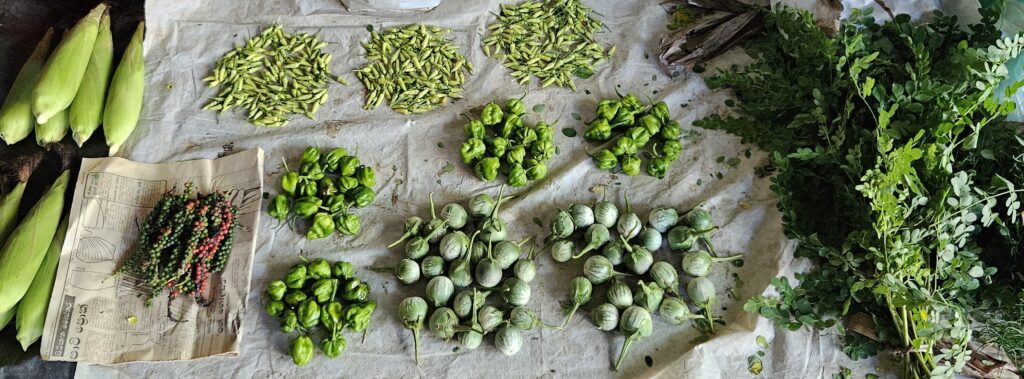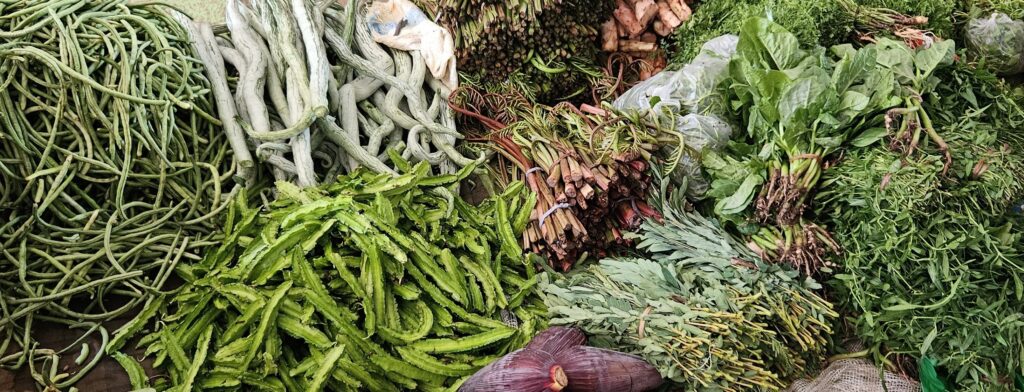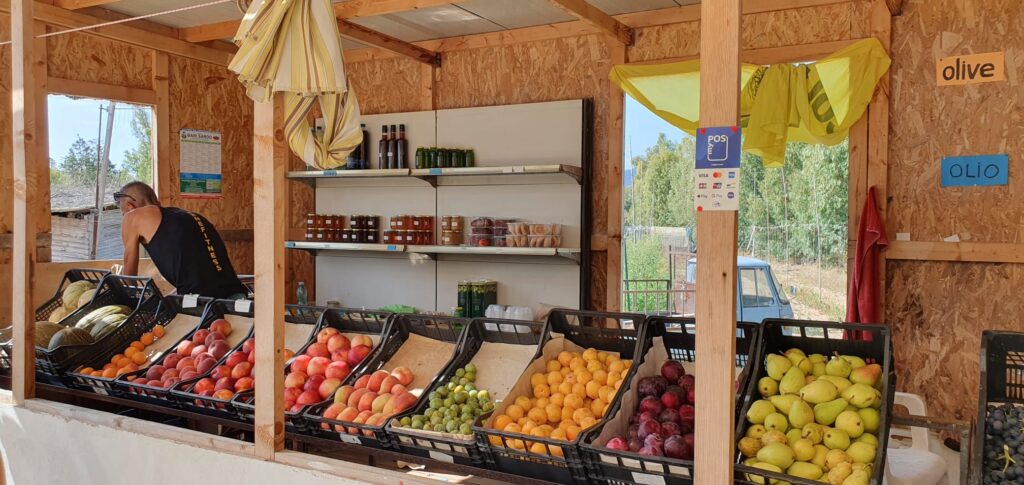Tasting

Traveling with your sense of taste
During our travels, we often ask local people about traditional dishes, typical ingredients and how they prepare and season their meals. We want to try them at least once and experience authentic food. We also enjoy eating where the locals eat. Sharing a meal among people in a peaceful atmosphere, in a place where food carries cultural and social meaning, is always something we deeply appreciate.
In countries where special attention is given to nutrition and flavor to promote balance in the body and support health, we can gain valuable insights for our own well-being.
The knowledge of life is especially taught in the Indian healing tradition of Ayurveda, which has also been practiced in Sri Lanka for over 2,000 years. Traditional Ayurvedic healers or doctors in the Indian and Sri Lankan cultural context are known as Vaidyas. We love the idea that some Vaidyas are only paid when their patients stay healthy.

In Ayurveda, food is closely associated with enjoyment. Great importance is placed on natural, unprocessed and fresh ingredients, which should ideally be eaten right after preparation. We learned that even fruit can be seasoned – with ginger, pepper, cardamom, cinnamon or lemon juice, for example – and that foods should be used in their entirety, including leaves, seeds and roots, as long as they are edible. Holistic and balanced meals that include all six tastes (rasas) – sweet, sour, salty, pungent, bitter and astringent – provide lasting energy, support vitality and promote health and healing. These are truly life-giving foods that nourish the body while offering rich sensory and culinary pleasure.
Seeing and tasting are closely linked. The pleasure often begins with the first glimpse of the richness that nature and local cuisine reveal to us. At the colorful markets and in the aromatic gardens of Sri Lanka, we discovered an impressive variety of fruits and vegetables as well as herbs and spices. With herbs alone, more than 100 different types are used. These impressions gave us plenty of inspiration for delicious dishes and sparked our curiosity. We definitely wanted to experience it all with our taste buds as well.

It was all the more surprising that this abundance was hardly reflected in the food served at guesthouses. The food was usually tasty, but the countless restaurants typically offered the same or very similar menus. Especially in tourist areas, there was little variety in flavor. We had the impression that only small amounts of herbs and spices were used, while rice was served in large portions, sometimes even French fries, and that meals had to be prepared quickly. As a result, we only occasionally experienced special flavors. The food was often spicy to hot but lacked refinement. It seemed as if the taste and price expectations of tourists were the main focus. An Ayurvedic herbalist we met in a spice garden confirmed this impression.
We only found a few places where all the rasas, the six tastes of Ayurveda, were truly used in cooking. One of them was a small resort in Negombo that impressed us with its cuisine. You could taste it: here, food is prepared to nourish, not just to fill you up.
We were especially eager to try lotus roots, as we had never eaten them before, as well as green herb salads like Mallung or Gotu Kola (Centella asiatica). It wasn’t until the last day of our several-week journey that we were lucky enough to taste a curry made from banana blossoms. It had a wonderfully bitter flavor and complemented the other, mostly sweet curries – such as those made with pumpkin, carrot or beetroot – perfectly. Probably due to its fairly bitter taste, it’s rarely offered to visitors, which we find a real pity.
Other delicious curries were made with mushrooms (the main season in the south is April and May), radish, snake gourd, eggplant, beans or a colorful mix of ingredients. We were always happy when a variety of aromatic spices and herbs were used, or when we encountered less common vegetables. What excited us most were the fermented side dishes (pickles) and homemade chutneys.
The lemon or lime pickles we had the chance to try once were unlike anything we had ever eaten before. At first, we could hardly describe the flavor – it was so strikingly different!
Our travels have shown us the incredible variety of fruits, vegetables, spices, herbs, cooking methods and dishes around the world that can nourish us on the road and enrich our meals at home. It doesn’t take exotic or expensive ingredients to experience true culinary joy. Sometimes, just a few high-quality ingredients are enough, like with bread. How wonderful a slice of homemade bread with butter can taste!
Even though we didn’t always find the culinary variety we had hoped for – especially in places where adaptation took precedence over diversity, spices were toned down and dishes simplified to suit tourists – we still gained valuable inspiration and were reminded of some nearly forgotten principles. Among them: paying attention to the quality and freshness of ingredients, using as many different components as possible and preparing meals with care.

Ways to enjoy a wide variety of foods include:
- Shopping for ingredients yourself and preparing the meals
- Taking local cooking classes
- Asking locals to prepare dishes authentically – just as they would cook for themselves
Whether while traveling or in everyday life, those who explore their surroundings with open eyes often discover surprising culinary treasures right outside their door. Many edible plants – including herbs, nuts, seeds and fruits – can be found growing wild in public spaces. Often overlooked and unfamiliar to many, they are delicious, free, unprocessed and rich in nutrients, fresher and more full of vitamins than anything in the supermarket.




Leave a Reply